Body Liberation Therapy and the HAES Model
Body Liberation Therapy and the Health at Every Size (HAES) model offer a compassionate, inclusive approach to healing your relationship with your body, food, and overall well-being. These approaches recognize that all bodies are worthy of respect, care, and dignity—no matter their size, shape, or ability.
Instead of focusing on weight loss or body “correction,” this therapy challenges harmful societal messages about bodies and health. It helps you move toward self-acceptance, body trust, and intuitive ways of caring for yourself—without shame, restriction, or judgment.
How Does It Work?
Both Body Liberation Therapy and HAES prioritize healing from weight stigma, diet culture, and body shame, offering tools to help you:
✅ Unlearn Harmful Messages – Therapy helps you recognize and challenge societal and internalized beliefs about weight, beauty, and health.
✅ Develop Self-Compassion – Instead of treating your body as something to "fix," therapy supports body neutrality and self-kindness.
✅ Shift the Focus from Weight to Well-Being – HAES® encourages tuning into your body’s needs—such as hunger, movement, and rest—without using weight as a measure of health.
✅ Explore Your Relationship with Food & Movement – Therapy helps you heal from restrictive dieting, emotional eating, and exercise guilt while promoting intuitive eating and joyful movement.
✅ Set Boundaries & Advocate for Yourself – Learn how to navigate weight stigma in healthcare, relationships, and society while advocating for respectful, affirming care.
Body Liberation Therapy is a therapeutic approach that focuses on healing from weight stigma, diet culture, and body shame. While HAES is often applied in healthcare settings, Body Liberation Therapy is more personal and emotional, helping individuals break free from harmful societal messages and build a positive, empowered relationship with their body.
What Can This Therapy Help With?
Body Liberation Therapy and the HAES model can support people in healing from:
✅ Body Image Distress – Helps reduce shame and criticism while fostering self-acceptance.
✅ Eating Disorders & Disordered Eating – Supports recovery by moving away from restriction, guilt, and the diet cycle.
✅ Weight Stigma & Fatphobia – Provides a space to process the emotional impact of societal bias and discrimination.
✅ Chronic Dieting & Yo-Yo Dieting – Helps break free from cycles of restriction, bingeing, and body dissatisfaction.
✅ Emotional & Stress Eating – Supports mindful eating and self-compassion without shame or guilt.
✅ Healthcare Trauma & Medical Fatphobia – Helps process past experiences and build confidence in advocating for weight-inclusive care.
✅ LGBTQIA2S+ & Neurodivergent Body Experiences – Creates space for intersecting identities and how they shape body image and care.
How Can This Therapy Help You?
Body Liberation Therapy and HAES center you—not your weight or appearance. This approach can help you:
✨ Build trust in your body and its needs.
✨ Feel less guilt and shame around food and movement.
✨ Develop self-compassion and respect for your body as it is now.
✨ Heal from the impact of diet culture and weight stigma.
✨ Find freedom from restrictive, exhausting cycles of dieting.
Your worth is not defined by your size.
Body Liberation Therapy helps you live fully, care for yourself with kindness, and find peace in your body—exactly as you are.

The Difference Between HAES and Body Liberation Therapy
While Health at Every Size (HAES) and Body Liberation Therapy share many values—such as rejecting diet culture, challenging weight stigma, and promoting self-acceptance—they have distinct focuses and approaches.
HAES (Health At Every Size)
HAES is a weight-inclusive approach to health and well-being that emphasizes respect, compassionate care, and body autonomy. It challenges the idea that weight is the main indicator of health and instead focuses on behaviors that support overall well-being, regardless of body size

Core Principles of HAES
✅ Weight Inclusivity – Bodies of all sizes are inherently worthy of respect and care.
✅ Health Enhancement – Supports accessible and inclusive healthcare that is not weight-focused.
✅ Respectful Care – Challenges weight stigma, discrimination, and bias in medical and mental health settings.
✅ Eating for Well-Being – Encourages intuitive eating, mindful eating, and freedom from restrictive dieting.
✅ Joyful Movement – Encourages movement that feels good and supports well-being rather than weight loss.
How HAES Helps
HAES is often used in healthcare, nutrition, and mental health settings to promote a weight-neutral, inclusive approach to well-being. It helps individuals shift the focus from weight loss to sustainable, health-supportive behaviors.
Core Goals of Body Liberation Therapy
✅ Healing from Diet Culture – Unlearning harmful beliefs about food, exercise, and weight.
✅ Body Neutrality or Acceptance – Moving away from body shame, even if self-love feels out of reach.
✅ Processing Weight Stigma & Trauma – Creating space to explore and heal from negative experiences related to body image and discrimination.
✅ Advocating for Inclusive & Affirming Care – Supporting individuals in setting boundaries and finding providers who respect them at any size.
✅ Honoring All Bodies – Recognizing that body image struggles are shaped by intersecting identities, including gender, race, disability, and neurodivergence.
How Body Liberation Therapy Helps
This therapy supports emotional healing by providing a safe, non-judgmental space to process body image struggles, diet culture harm, and experiences of discrimination. It helps clients move toward self-acceptance, autonomy, and freedom from body-related distress.
How HAES and Body Liberation Therapy Work Together
HAES provides a framework for healthcare and well-being, while Body Liberation Therapy helps individuals heal from the emotional impact of body shame and weight stigma.
Both approaches support freedom from harmful societal expectations and affirm that all bodies deserve respect, care, and autonomy.

Therapy Modalities







